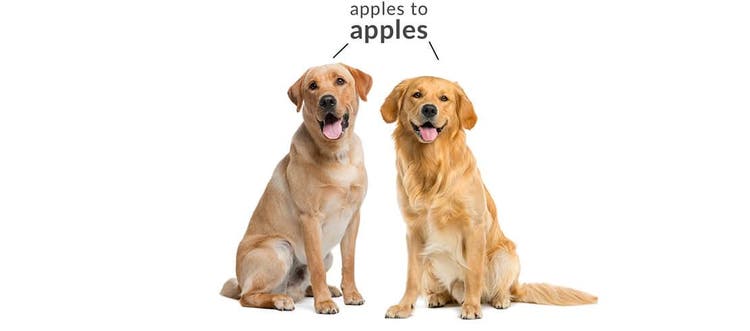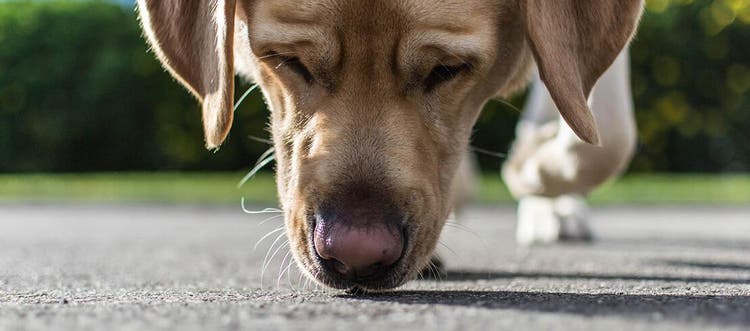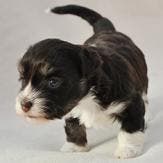As dogs age they may become a little forgetful, suffer from arthritis or aches and pains, and reduce their activity level. Yet, senior dogs can live happy, healthy lives for several more years. Here are seven potential issues senior dogs can face, and how you can help alleviate them.
The age at which your dog will be considered "senior" depends on its size or breed. Smaller breeds typically enjoy longer lives, and some can live well beyond 10 years old. Larger breeds can typically live 8 to 10 years.
When your dog enters its later years, look for the usual signs of ageing, and respond patiently with necessary care. Here are seven issues to watch for, and how you can help your dog age gracefully.
1. Problems with teeth
Poor dental hygiene and dental disease can damage your older dog’s teeth, gums and other organs. Talk to your vet about the best ways to maintain good dental health in your senior dog, including:
- Manual tooth brushing
- Feeding chew treats or dry dog food formulated to help keep teeth clean
- Regular teeth cleaning at the vet
2. Sore and stiff joints
Osteoarthritis is a gradual but progressive degenerative condition of the joints. Bony outgrowths can also form around a joint, which can cause pain and restrict mobility.
Signs of osteoarthritis include:
- Decreased activity
- Reluctance to climb stairs or jump into a car
- Stiffness and difficulty rising after a rest
- Yelping or whimpering in pain
- Loss of appetite
- Occasional aggression (due to pain)
There are several ways you can alleviate discomfort and treat arthritis in your senior dog:
- Anti-inflammatory and pain-relief medication
- Nutritional supplements, including omega-3 fatty acids
- Physical therapy, including hydrotherapy
- Weight loss
- Exercise modification
- Environmental modification – ramps, padded bedding, massaging of joints and mental stimulation
It’s important to note that osteoarthritis is not only a disease of senior dogs. Young dogs can also be affected. Regardless of their age, the sooner their pain and inflammation can be managed, the better their long-term quality of life will be. If you think your dog may be starting to show signs of osteoarthritis, it’s important to consult your vet for a thorough assessment and advice on the best way to manage your dog’s needs.
3. New lumps and bumps
Older dogs can often develop unusual growths on and under their skin. Not all lumps and bumps are sinister, but look out for changes in size, shape, colour and consistency, as well as redness, weeping and ulceration. If you notice anything unusual, consult your vet.
4. Cognitive decline
Cognitive dysfunction, or dementia, is a progressive disease that may change your senior dog’s behaviour. Signs of decline may include:
- Urinating and defecating inside
- Disorientation (e.g. getting stuck in a corner or having difficulty finding its food)
- Increased attention-seeking behaviour
- Waking at night and sleeping a lot during the day
- Disinterest in toys and physical activity
- Pacing and irritability
- Loud barking or whining, often at inappropriate times
- Anxiety, particularly separation anxiety
- Reduced appetite
Cognitive decline cannot be cured, but the progression of the disease can be managed with dietary modification and drug therapy, which you can discuss with your vet. It is also important to:
- Take more frequent trips outdoors or provide an indoor elimination area
- Provide mental stimulation
- Stick to a daily routine to make your dog feel safe and secure
- Avoid stairs where possible, particularly if your dog is arthritic
5. Vision impairment
Changes in your senior dog’s eyes can affect their eyesight. Common signs of vision impairment include:
- Bumping into things
- Not being able to find their food or water
- Being easily startled
- Tentativeness when going up or down stairs
- Cloudiness in the eyes
Most senior dogs will have a cloudy, bluish-grey haziness in their pupils, which can be mistaken for cataracts. This is a normal age-related change in the lens of the eye and does not usually affect their vision. If you think your dog may have problems with its eyesight, be sure to consult your vet.
6. Hearing loss
It is not uncommon for senior dogs to experience hearing loss. With a bit of support, dogs with hearing loss can continue to live full and happy lives. Here’s how you can help a dog experiencing hearing loss:
- Always keep your dog on a leash when outdoors
- Alert your dog to your presence when approaching (e.g. turn on the light or tap on the floor)
- Use hand cues for commands and reward your dog when they respond
7. Lower activity levels
You may notice your dog sleeping more during the day, or they may be reluctant to run around or play as much as they once did. However, older dogs need to remain active to avoid obesity and muscle wasting, to maintain joint health and to remain mentally stimulated. Here’s how to encourage your dog to exercise:
- Know your dog’s limits and modify the intensity and duration of activity depending on their health
- Swimming is a great low-impact activity for senior dogs
- Dogs love the challenge of using their senses to find food, so be creative and hide some of their food as a treat (e.g. under cups, inside food toys)
Consult your vet to check for any health-related issues, like osteoarthritis, that may be affecting your dog’s energy levels and mobility.






